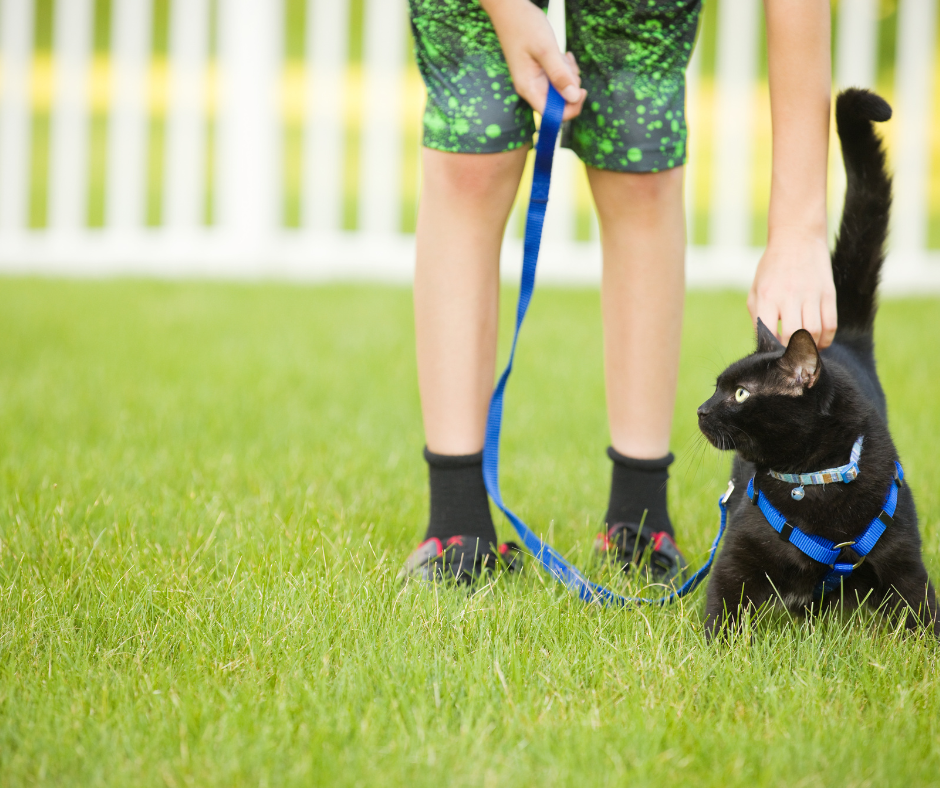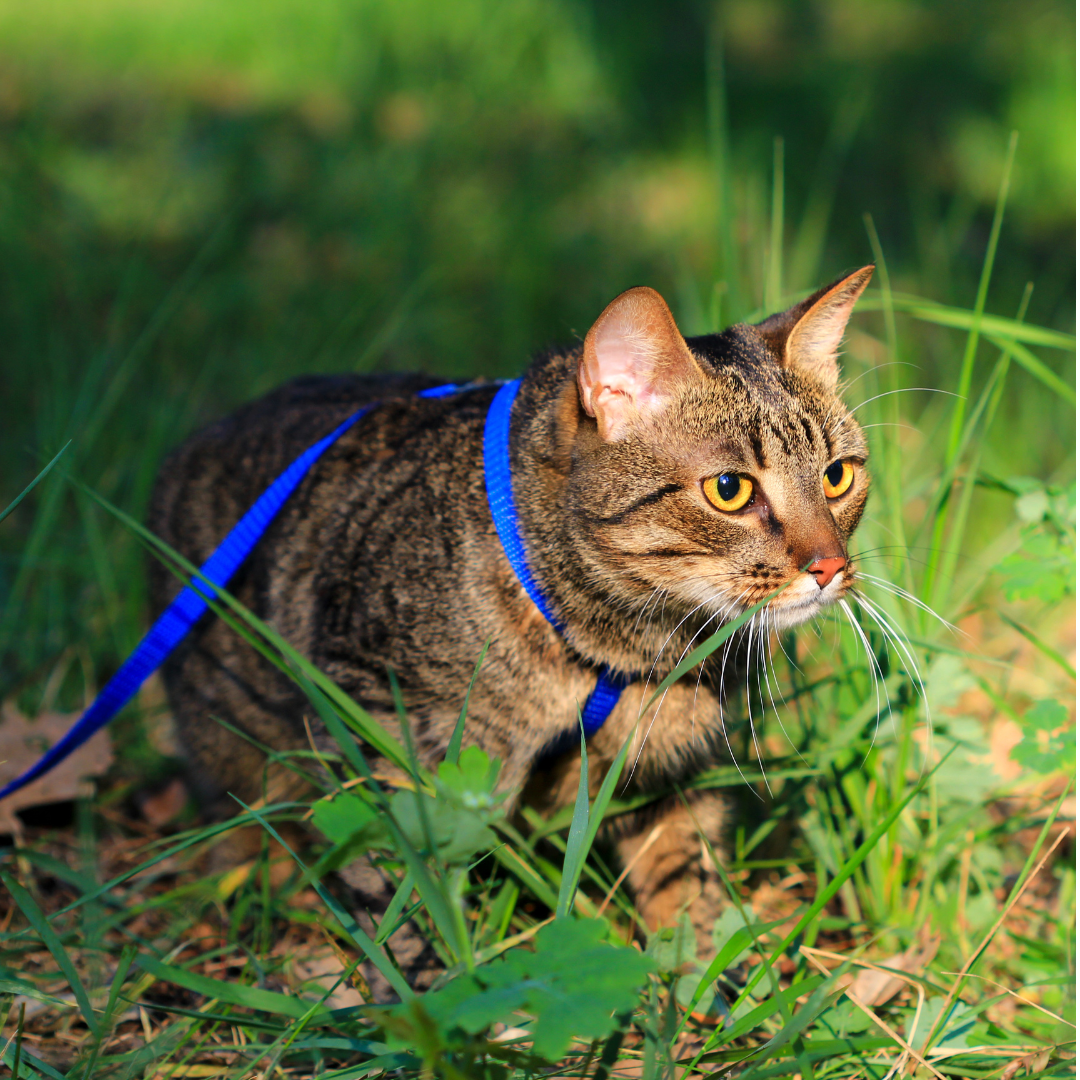Discussing The Practicality and Process Of Taking Your Cat For A Walk
You can easily take your dog for a walk, but can you take your cat for a walk? Surprisingly the answer is yes! If trained correctly, a cat can be trained to walk on a leash similar to a dog. However, training and convincing your cat to walk on a leash is not an easy task. While cats are domesticated animals, they are typically more independent and less obedient than dogs. This independent personality and lack of obedience makes them significantly more difficult to train. This article will discuss the do’s and don’ts of walking your cat on a leash such as recommended equipment, proper training tips, and whether or not your cat will enjoy it (some cats may enjoy it and some cats will simply hate it). Keep reading to learn more!
Will Your Feline Friend Enjoy It?
This is the first question you need to ask yourself before reading any further. Yes, the idea of taking your cat for a walk sounds nice and convenient to you, but if your cat doesn’t enjoy it then you probably shouldn’t do it. At the end of the day we should always keep our pets best interest in mind. That being said, some cats may enjoy going for a walk while others will simply refuse and become dead weight. It really boils down to the cat’s personality and nobody knows your cat better than you. Make a good and thoughtful assessment of your cat’s likes and dislikes before attempting to train them to walk on a leash. If your cat is adventurous, loves to be outside, and is fairly easy going/trainable, then give cat-walking a shot. Both you and your cat may end up loving it, but you ultimately don’t know until you try!
Proper Equipment
We strongly recommend using a harness as opposed to a collar. A collar is not secure enough to walk your cat as they can easily squirm and slip out of it when frightened or agitated. A collar also doesn’t provide any control over your cat as all of the force from pulling on the leash is put on your cats’ neck as opposed to their body. A lightweight jacket harness will work much more efficiently as it offers more surface area to distribute pressure when pulling on the leash, thus giving you more control of your cat. Keep in mind that no harness is 100% escape proof. Cats are very nimble creatures and can squirm, slip, and roll out of nearly any situation. That being said, try to avoid stressful situations where your cat will potentially try and escape from their harness. During your walk avoid contact with other pets (dogs, cats, etc), stay away from areas with loud and/or abrupt noises (car traffic, construction work, etc.), and be mindful of your surroundings as cats will instinctively respond to and chase any form of prey (squirrels, chipmunks, birds, etc.). We also recommend not using a retractable leash as cats are very fast animals and you may not be able to react in time to stop your cat from running away. Stick to using a traditional leash to maintain optimal control over your cat during your walks.

The Right Way To Train Your Cat
Aside from a quality harness, we also recommend investing in quality cat treats. Find a cat treat that your cat really enjoys and use it as motivation and encouragement when training your cat to use a leash and harness. Over time, your cat will learn to associate receiving treats with leash and harness walks. Besides treat association, the best advice for training your cat to walk with a leash and harness is to take it slow. As previously mentioned, cats are very independent animals and will typically not be as receptive to training the way a dog would. Walking a cat is significantly different than walking a dog because you don’t walk the cat, the cat walks you. Cats are not obedient like dogs. They like to meander, wander, and move at their own pace when they feel like it. Again take it slow, follow along, apply gentle pressure when necessary, and never pull or tug. You want this to be an overall enjoyable experience for your cat as that is the only way they will be willing to cooperate. It’s also a good idea to begin your leash and harness training with your cat indoors. Your cat feels more comfortable in its own home and may be more receptive to the whole idea. Indoor training is also much safer as there are less things to frighten or excite your cat that could provoke them to try and slip out of their harness and/or run away. For a more detailed guide on how to train your cat to walk with a harness and leash, check out PreventiveVet.com for more information.
The Benefits Of Walking Your Cat
Walking your cat can be a fun and exciting experience for both you and your cat. But, it is far easier said than done. If you decide to take up the challenge of walking your cat, remember to take it slow, be patient, use the proper equipment, utilize lots of treats, be cautious, and be mindful of your surroundings. Training your cat to walk with a leash and harness is no easy endeavor, but it can be very rewarding to both you and your furry friend. We hope this article will help you on your mission to train and walk your feline friend both safely and efficiently. If this article about cats piques your interest, check out our other article entitled National Cat Day. It may just be the purr-fect read for you!


0 Comments